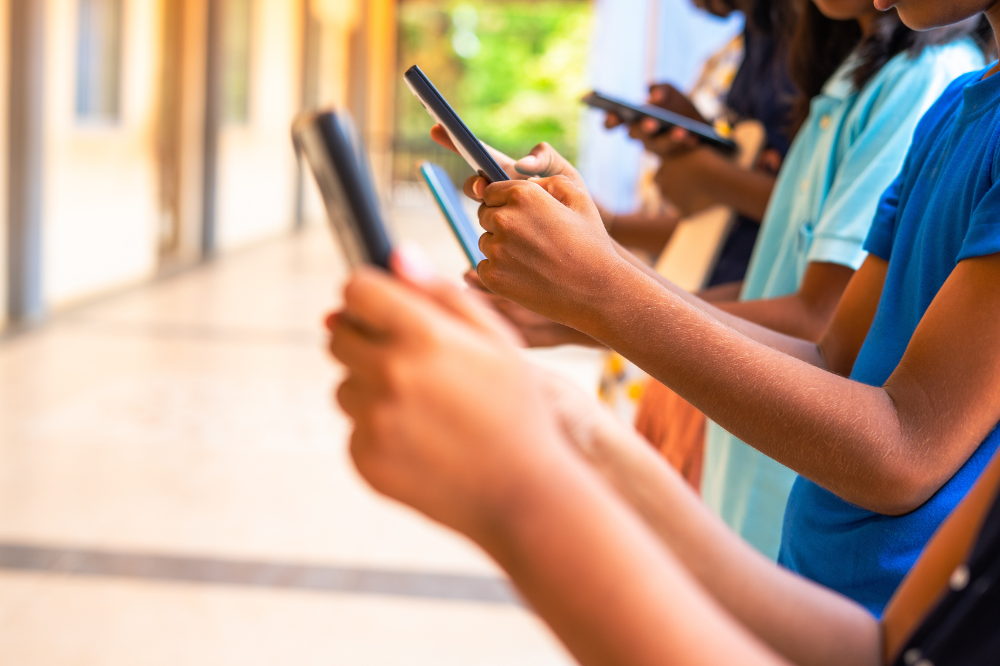
It’s no secret that Aussie kids are spending way too much time on screens, but what is less understood is the very real impact that excessive screentime is having on the cognitive health of young people.
Recently, psychology researchers at Macquarie University published a review and meta-analysis of 34 studies into the neuropsychological deficits in children and teenagers who had screen-use disorders – basically what can be classified as ‘screen addictions’.
Their findings showed strong evidence of impacts on attention, focus and executive functioning in these young people, but also changes in their brains that were visible on scans, with the loss of grey and white matter in areas of the frontal lobe that are associated with learning and memory.
Worryingly, the research also found overuse can result in young people losing brain capacity.
While these studies relate to the roughly 3% of teenagers who are classified as having a clinical screen overuse disorder, the latest figures show the average Australian teenager is spending four to six hours a day on social media, and a total of up to eight hours a day using screens for leisure.
Professor Mark Williams is an Honorary Professor in the School of Psychological Sciences at Macquarie University, and the author of The Connected Species: How the Evolution of the Human Brain Can Save the World.
When asked what he finds most frightening about kids using smartphones, he said the cognitive effects – particularly the impact on kids’ attention spans – stands out.
“Attention is crucial for controlling what we are aware of at any moment and filtering out all the extra noise in the environment,” Professor Williams told The Educator.
“Without a strong attentional capacity, we are slaves to our environment and will get easily distracted by things around us. For kids, this is a huge problem as they are expected to sit in a classroom and attend to the teacher or the task at hand without getting distracted by other things going on around them.”
Professor Williams said any classroom teacher would attest to the fact that distraction in a classroom seems to be getting worse.
“In fact, according to the latest OECD PISA report, Australian schools have some of the worst behavioural issues of any of the OECD countries. We also have one of the highest rates of screen use in classrooms. It is not hard to put two and two together,” he said.
“Screens cause attention issues, screens also attract attention, and a country that has a very high number of screens in classrooms also has the highest number of distracted students.”
Professor Williams said while steps like the proposed social media age limit and phone bans in schools are a step in the right direction, more needs to be done.
“We need a serious rethink about how, when and why we are using screens in schools. Many countries are moving to minimise screen use and going back to using real textbooks and paper,” he said.
“We know that students learn less when on a screen; they are more stressed, less able to attend, and it negatively impacts their cognition and mental health.”
When compared to other OECD countries, Australian students spend more time in front of screens than the majority and have some of the poorest results in educational outcomes, Professor Williams noted.
“Why do we have students on screens in preschool and primary schools? The research shows it is impacting on the development of their brains,” he said.
“And there is no empirical research showing it improves outcomes. In fact, the vast majority of research shows it has a negative impact on learning and increases the likelihood of behavioural issues.”
At the high school level, there are only a very limited number of courses where screen use is actually beneficial, Professor Williams said.
“Why students need to be on a laptop in English, Science, or Maths every lesson is not evident to me, and I have never had anyone explain to me why it is necessary,” he said.
“By removing screens from classrooms students will be less distracted and can concentrate on learning. Using devices in classrooms should be the exception rather than the expectation if we are serious about improving educational outcomes and mental health within our schools.”


